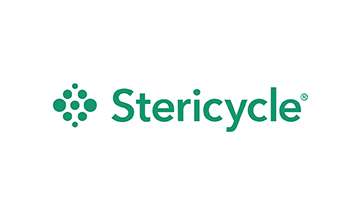We are very fortunate in the U.S. to have an excellent and readily available healthcare system. However, maintaining such a system requires many behind-the-scenes support services that many of us are unaware of or take for granted. Managing medical waste is one such service. Every day, a wide range of potentially infectious or chemical waste is created requiring special disposal; this includes needles from routine vaccinations, tumors removed from patients, trace chemicals remaining in an IV line, or bloodied supplies from treating an accident victim. Of millions of tons of waste generated from our hospital systems each year, just 6-8% (per Practice Greenhealth) is considered “regulated medical waste” requiring treatment from companies like Stericycle. While most people think that all regulated medical waste is incinerated, only about 10% is treated via incineration.
What is Medical Waste Incineration?
Medical waste incineration is the process of burning specific wastes, including pathological, trace chemotherapy and non-hazardous pharmaceutical wastes as it is considered the safest, most effective means of treatment and prevents harm to the environment and our health in general. There are alternatives to incineration including autoclaving, chemical treatments, or ozone disinfection, but these technologies are admittedly incapable of completely destroying certain medical wastes, such as pharmaceuticals and specific pathological wastes. In fact, 31 states require incineration of certain medical waste, and the EPA currently recommends incineration of pharmaceuticals to avoid the possibility of water contamination.
The Future of Medical Waste Incineration
With advancements in medical treatment technologies and increases in regulations for proper waste management, the amount of medical waste resulting from healthcare is expected to increase. Medical waste and the need for incineration is an outcome of the advanced healthcare system from which we all benefit. Stericycle provides a valuable and necessary behind-the-scenes service that protects our communities from harmful pathogens and chemicals, thereby supporting the continuity and reliability of healthcare into the future.
Stericycle's Commitment to Sustainable Medical Waste Incineration
Stericycle is committed to supporting our environment, customers, and ultimately the healthcare users, by responsibly managing the wastes they generate and using best practices to effectively treat such wastes. To that end, Stericycle continues to make investments to improve our incinerator technology. During 2014, significant improvements were made in the pollution control levels at each of Stericycle’s existing U.S. medical waste incineration facilities to meet new lower regulatory limits. State-of-the-art air scrubbers and carbon beds have been installed. Higher capacity generators were added to help prevent interruptions in emissions control processes. New routines for facility management, maintenance, and testing controls have been put into place to ensure continued compliance and to consistently operate below the more stringent standards.
Learn More About Medical Waste Incineration
Read about Our Sustainability Commitment or watch our video: What Happens to Regulated Medical Waste?



